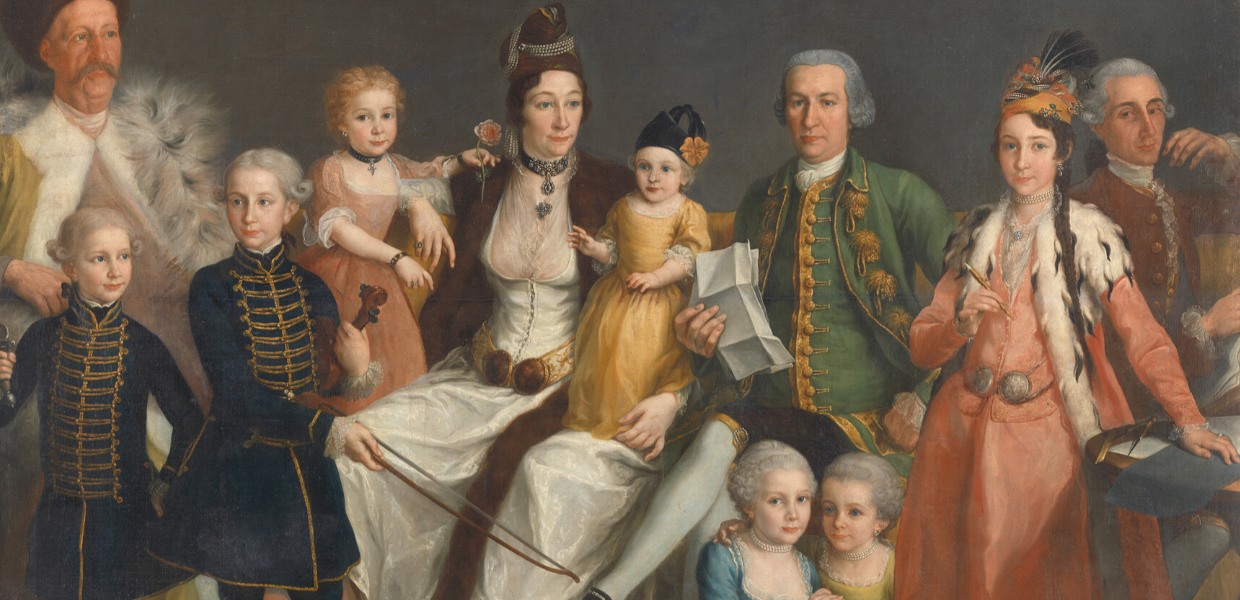Interacting with the Culture Chatbot
The Europeana Generic Services project Culture Chatbot aimed to help cultural heritage institutions to use chatbots to engage visitors, help them find content and answer common questions. Find out more about what the project achieved and the different chatbots it developed.

- Title:
- David George van Lennep, Senior Merchant of the Dutch Factory at Smyrna, and his Wife and Children
- Creator:
- Antoine de Favray
- Date:
- 1769 - 1771
- Institution:
- Rijksmuseum
- Country:
- The Netherlands
- Copyright:
- Public Domain
Chatbots and cultural heritage institutions
Chatbots are pieces of software designed to react to digital conversations as if they were a human conversational partner. They are widely used across social media and commercial platforms. The Culture Chatbot Generic Services project explored various needs and use-cases of museums and aggregators for which chatbots could be valuable.
As a result, we developed a chatbot platform and several different versions of chatbots, each one addressing a set of needs of a partner. Eventually, the project delivered the following chatbots and technologies.
Chatbot for Jewish Historical Museum in Amsterdam
This chatbot is integrated into the website of the museum. It was trained to maintain a simple conversation, to introduce museum exhibitions and collections, help people search for collection items and act as a ‘reading assistant’ by searching for keywords selected by those using online collections. It was trained to recognise entities from the dataset describing its museum collection. Try out the chatbot.
Chatbot for the POLIN Museum of the History of Polish Jews
This Facebook bot introduces the museum, including its permanent and temporary exhibitions, collections, campaigns, events and other subjects. It also allows people to search through the collections the museum shares with Europeana. The bot is in production and not yet deployed, but you can read more about it here.
Assisted Search Technology for CulturaItalia Portal
For the Italian national aggregator, CulturaItalia, we could not find a natural use case to use the chatbot as it existed. They were interested in the national language-based search technology developed for the search function of the bot, and in and using the recent advances in machine learning for natural language processing and understanding. We worked to produce a better search function for the portal, which we called Assisted Search as it assists the user by understanding semantic entities in the query (people, places, works) and giving more weight to records containing these entities. You can play with the result on CulturaItalia portal (note the 'Assisted Search' option).
Europeana Multilingual Chatbot
This standalone chatbot helps users navigate the collections of Europeana, allowing people to easily explore a rich variety of cultural heritage content, including several Europeana online exhibitions. Users can talk with the chatbot and ask queries that they would put into the Europeana search box. In addition, the bot speaks five European languages and translates the metadata of the found records to the language you choose. Try it out.
You can also see a chatbot on Europeana Pro, where it has been incorporated to help data partners to find an aggregator. Aggregators serve as a bridge between Europeana and cultural heritage institutions by gathering data and making it accessible through Europeana. Now, partners can chat and interact with the Culture Chatbot on Pro to determine which one they need to contact and get advice on sharing data. Try out the chatbot.
Find out more
This project was an amazing opportunity to explore the potential of this exciting technology for cultural heritage organisations. But even as we have delivered several different implementations, there are many more possibilities to explore. The platform will be developed further and we are interested in exploring new uses for it with aggregators and institutions in the Europeana network.
Please get in contact if you'd like to try this technology in your institution and with your data, or visit our website to find out more.

